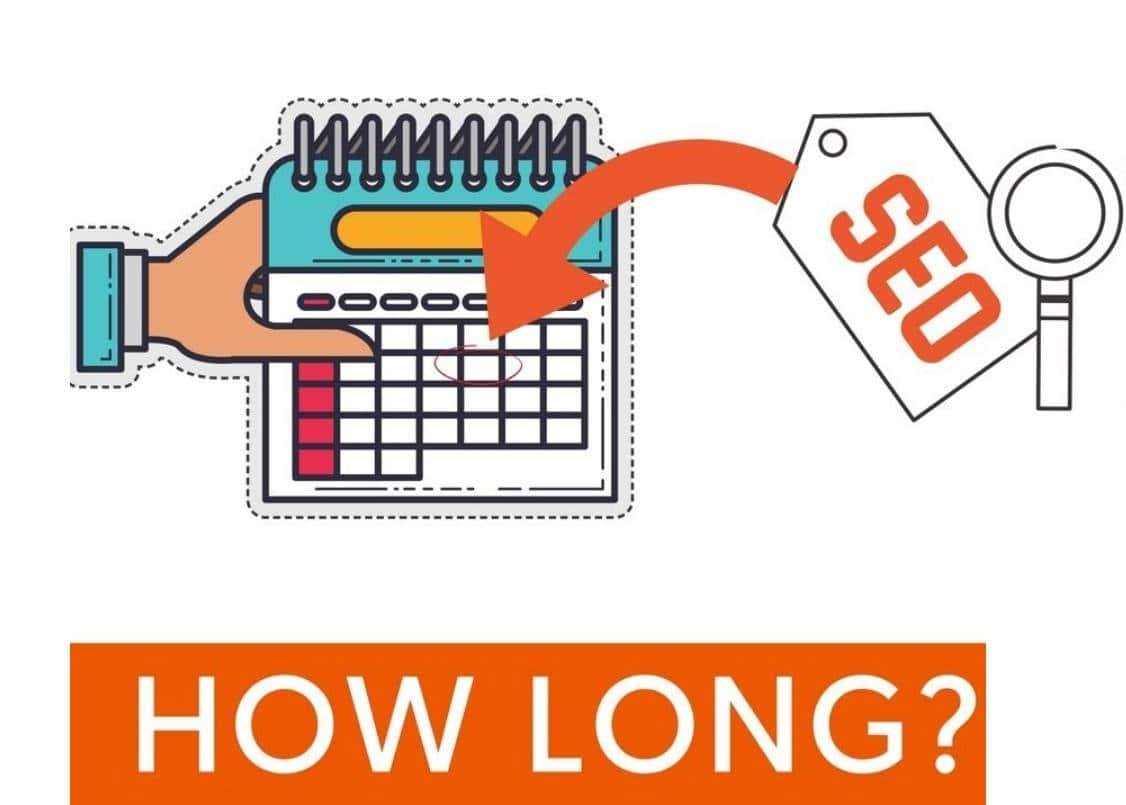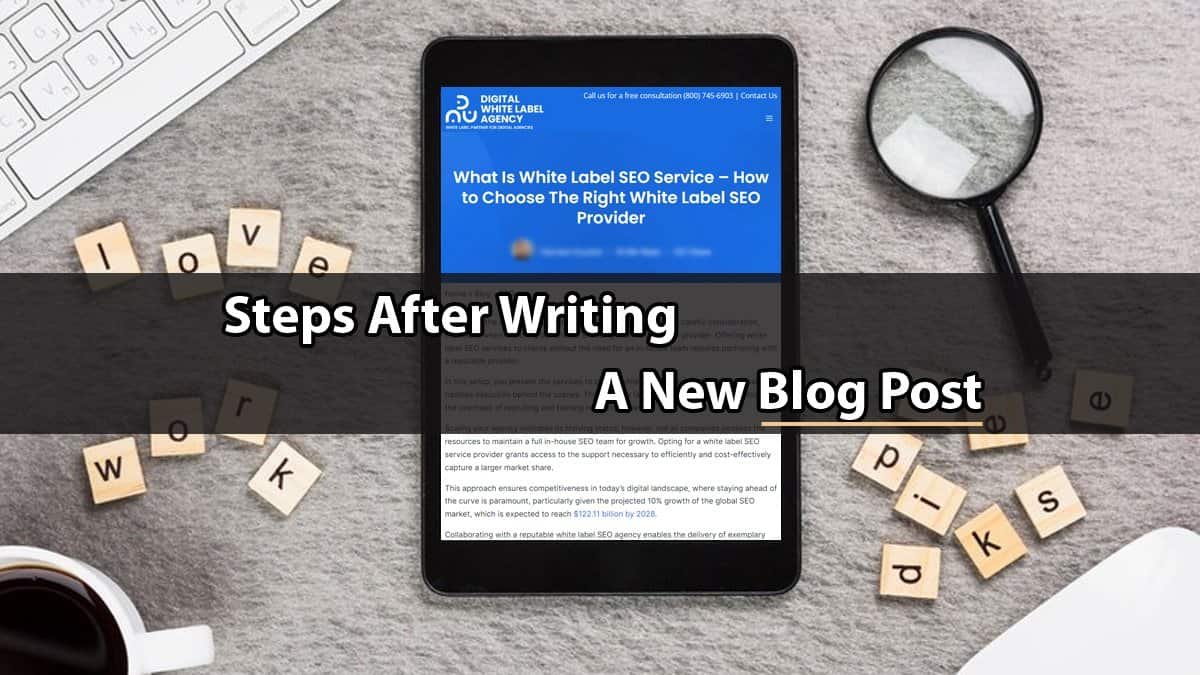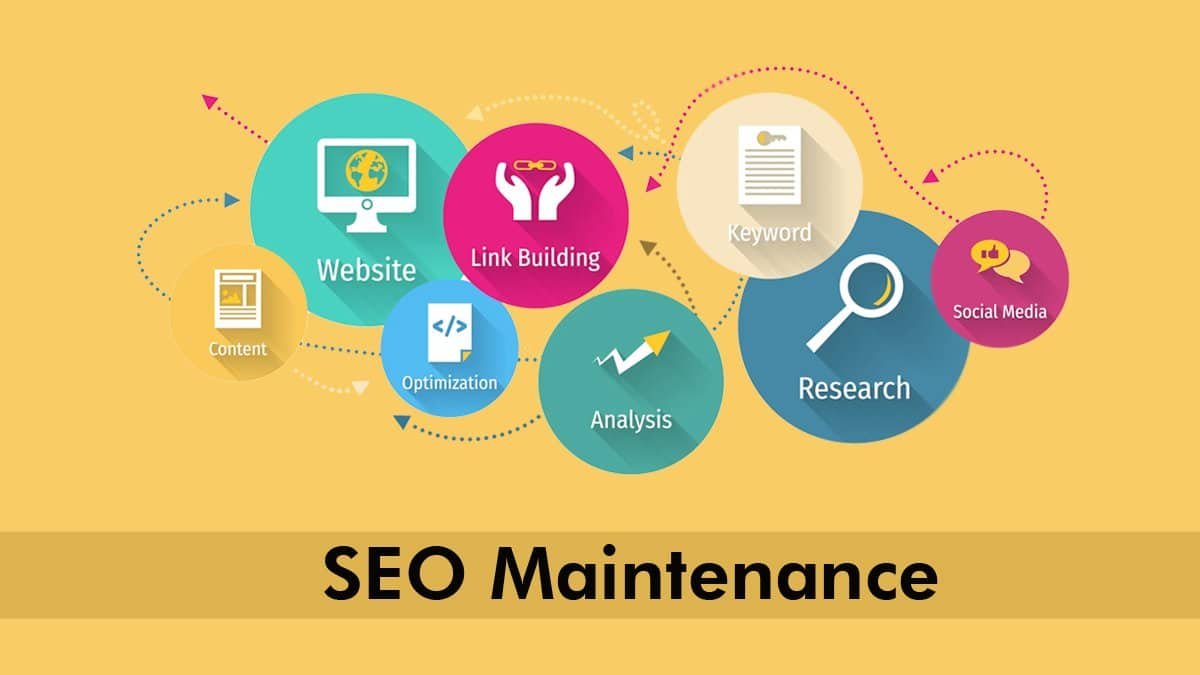You may have heard that achieving rapid results in SEO is a straightforward endeavor. However, this assumption is far from the truth.
While it might have been easier to see quick gains in the past, the landscape of SEO has significantly evolved. This is due to constant changes in search engine algorithms and escalating competition in the digital space.
Although it’s natural for business owners to crave immediate results, it’s vital to recognize that legitimate, proven SEO strategies don’t deliver overnight success. Any SEO agency promising such swift outcomes, especially with regard to SEO timeline, should be viewed skeptically.
In this post, we’ll explore the key factors that influence how long it takes to realize meaningful benefits from your SEO activities. Additionally, we’ll touch on the minimum time investment needed to optimize the effectiveness of your SEO strategy.
Factors Affecting Website SEO
Engaging in detailed discussions with your SEO provider is crucial for understanding the SEO timeline of your project. This not only helps set realistic expectations but also allows you to gain a nuanced understanding of the factors affecting ranking. Knowing the timeline is essential for coordinating other aspects of your marketing strategy and for setting milestones that will help measure the progress and impact of your SEO efforts.
Understanding the factors that affect website SEO is more complex than it might initially appear. Multiple variables impact the user experience and SEO outcomes. So, what are these contributing factors? They include the amount of prior SEO work, your website’s structure, content quality, backlink profile, and other SEO-specific elements.
Let’s break down these key influences on your website’s SEO:
- Domain Authority (DA) and Domain Age : The longer your website has been active (domain age) and the higher its Domain Authority, the better your chances of ranking well in search engine results. Authority typically accumulates over time.
- Off-Page SEO and On-Page SEO : Off-page SEO involves external factors such as backlinks, while on-page SEO focuses on optimizing individual web pages. A balanced approach addressing both is essential for SEO success.
- Quality and Quantity of Backlinks : A strong backlink profile should feature numerous high-quality links. Relevant and trustworthy backlinks enhance your website’s credibility.
- Technical Issues and Penalties : Factors like website glitches or hosting problems can negatively affect SEO. Moreover, penalties for violating search engine guidelines can diminish your rankings.
- SEO-Friendly Design and Structure : Search engines favor websites with well-organized, SEO-optimized structures.
- Keywords and Content Strategy : The right keyword choices and a well-executed content strategy that considers user intent can have a significant impact on your rankings.
- Relevance and Search Intent : Content should not only be relevant to your audience but also aligned with what users are actively searching for.
Now, back to the main subject—SEO timeline. Although some cases may yield quicker results, SEO usually requires a long-term commitment. Variables such as strategy, website design, meta descriptions, target demographics, competition, and business type are all vital components that influence your SEO success.
On average, SEO results tend to improve over a period of six to twelve months. However, there are ways to speed up the process:
- GMB (Map Listings): Utilizing GMB for Google Maps listings can provide quick results, as many users rely on Google Maps to find products and services.
- Organic Traffic: Visitors who reach your site either directly or via referral links contribute positively to your search engine rankings.
- Pay-Per-Click (PPC): Using paid search can generate immediate traffic, although it’s not a long-term SEO solution.
Understanding these diverse traffic sources enables you to develop nuanced strategies for better SEO performance. Adopting a month-to-month tactical approach will give you a clearer perspective on SEO timelines.
Also Read: MUST HAVE QUALITIES IN A SEO COMPANY!
Understanding the SEO Timeline in Order to Check the Status
Adopting a monthly strategy is highly effective for achieving optimal SEO results. This approach lets you track your performance in real-time and make informed adjustments as needed. Here’s a breakdown of a month-to-month action plan designed to enhance your website’s SEO.
-
Month 1: Research and Foundation
The first month should be dedicated to laying a solid foundation for your future SEO activities. Begin by conducting in-depth research on your brand, your competitors, and your target audience. This entails understanding what sets your brand apart—its unique selling points and value proposition.
Concurrently, carry out a comprehensive website audit to identify any technical glitches or errors that could adversely affect your site’s performance. This could range from finding broken links and slow load times to issues with mobile compatibility. Rectifying these problems early will set the stage for a better user experience and improved search engine rankings.
Additionally, invest quality time in keyword research. Pinpoint keywords that are in line with your business objectives and resonate with your target audience. Then, develop content pages focused on these keywords to make sure your content is both valuable and relevant to readers.
-
Month 2: Technical SEO Implementation
In the second month, shift your focus toward the technical facets of SEO . Implement necessary changes to make your website more search-engine friendly. This includes optimizing URL structures, fine-tuning meta tags, and creating an XML sitemap to facilitate easier crawling by search engines.
Place particular emphasis on improving the overall user experience. Confirm that your website is mobile-responsive and has fast load times—both are vital factors for user satisfaction and can significantly impact search engine rankings.
Further enhance your website’s layout and structure based on the insights you gained from the initial audit. The aim is to make it more user-friendly and easily navigable.
-
Month 3: Evaluate Keyword Performance
By the third month, it’s time to evaluate how well the keywords you targeted in the first month are performing. Use analytics tools to monitor your search rankings and the organic traffic coming to your site. Identify which keywords are making gains and which ones might need further fine-tuning.
While you may see some traction with generic keywords, pay special attention to the long-tail keywords you’ve chosen. These are typically less competitive and can drive more targeted traffic to your site. Utilize the data collected during this month to refine your future keyword strategies.
-
Month 4: Enhancing Content Quality and Building Backlinks
In the fourth month, turn your attention to enhancing the quality of your content and fortifying your backlink profile . Develop high-quality, insightful, and engaging content that speaks to your target audience. Keep your website current and credible by updating it with new, relevant information regularly.
At the same time, concentrate on acquiring high-quality backlinks. Look for opportunities such as guest posts, collaborations, and other effective link-building strategies. Quality should always take precedence over quantity when it comes to backlinks, so aim for links from reputable, authoritative sources.
-
Month 5: Social Media Engagement
In month five, focus on harnessing the power of social media to strengthen your online presence. Utilize your social media accounts by sharing content that appeals to your audience and by engaging actively with your followers. Consider participating in relevant social media groups or communities to further extend your reach.
It might also be beneficial to invest in public relations (PR) or media outreach efforts to improve your brand visibility and reputation within your industry. A robust social media presence can ultimately drive more traffic to your website.
-
Month 6: Ongoing Maintenance and Innovation
By the sixth month, your SEO efforts should be showing promising results, but the journey is far from over. It’s essential to continually maintain your website. This involves not only updating content but also identifying and fixing any new issues or errors that emerge.
Keep your audience engaged by introducing new, innovative strategies. Regular website audits are advisable to ensure your site stays optimized for both search engines and user experience.
Consistently executing these tasks and adjusting your strategy based on ongoing analysis will contribute to long-term SEO success and steady website growth.
Also Read: FROM ONE SEO AGENCY TO ANOTHER: TOP 11 SEO PROJECT MANAGEMENT INSIGHTS
How Long Does SEO Take to Generate Leads and Sales?

Source: Pinterest
One question often posed by business owners regarding SEO is, “How quickly can I expect to see results?” or “When will I achieve the coveted number one ranking on Google?” While aiming for the top Google spot is tempting, it might distract from the real goal: generating quality leads and sales.
In essence, the value of organic search traffic is in the revenue it brings to your business. Therefore, the crucial question to focus on is, “When will SEO start producing leads and sales?”
Based on our expertise, as well as insights from other reputable SEO agencies, it’s reasonable to expect noticeable results within 4-6 months of implementing SEO strategies. These results could manifest in several ways:
- Overall Improved Average Ranking : You’re likely to see a positive shift in your website’s average ranking across various search engine results as your SEO efforts begin to take effect. This improvement indicates increased visibility and prominence in relevant searches.
- Website Indexed for More Keywords : Effective SEO initiatives will result in your website being indexed for a broader range of keywords. This not only expands your online presence but also increases the chances of your site appearing in diverse search queries.
- Increased Website Traffic and Conversion Opportunities : The ultimate goal of SEO is to attract organic traffic. With the right strategies, you should see an uptick in the number of visitors to your site. This influx provides an excellent opportunity to convert potential customers into leads or even sales, depending on your business objectives.
It’s important to recognize that this period is just the starting point; it’s not the finish line. The full impact of your SEO efforts may not be completely realized within this initial timeframe.
Now, let’s explore the factors that influence the timeline for reaping the benefits of your SEO efforts. While the landscape is complex, and it’s impossible to list every variable, here are some key factors to consider:
- Competition for High-Priority Keywords : The level of competition for your target keywords can significantly influence how quickly you see results. If you’re aiming for highly competitive keywords, it may take longer to make a substantial impact. Understanding your competitors and strategizing accordingly is crucial.
- Effectiveness of Inbound Links : Inbound links act as endorsements in the eyes of search engines. The more authoritative and relevant these links are, the quicker your site can build authority and ascend in search rankings.
- SEO-Friendly Website : Search engines prefer websites that are well-optimized. This includes factors like site structure, mobile-friendliness, overall user experience, and, naturally, keyword optimization. A technically sound website can speed up positive SEO outcomes.
- Consistent Content Publishing : Consistency in producing high-quality content is fundamental to SEO. Search engines value fresh, relevant content. Regularly updating your site signals to search engines that your website is current and authoritative, which can potentially accelerate positive SEO effects.
In summary, the journey from launching SEO efforts to seeing tangible benefits requires a blend of patience, strategic planning, and adaptability. While SEO is not a quick fix, the impact can be significant when it does come to fruition.
-
The Significance of Competition in SEO Timeline
The greater the number of websites your company competes with, the more challenging and time-consuming it will be to improve your search engine rankings.
In industries with stiff competition, it’s likely that your rivals have experienced SEO specialists constantly fine-tuning their strategies. To gauge how soon you can expect to see SEO benefits, you first need to evaluate the competitive landscape in your specific niche and geographic location.
For instance, consider a small, local massage therapy clinic; it faces far less competition than a real estate agency located in a busy city filled with other brokerages. Yet, that city-based brokerage itself has fewer competitors than a national mortgage firm operating across multiple markets.
It’s essential to understand the relative nature of search rankings and why SEO outcomes can vary so widely among different online businesses.
-
The Significance of Inbound Links in SEO Timeline
Increasing the number of inbound links can substantially boost your SEO performance, but quantity alone won’t cut it.
Quality is key here. A few high-quality links from reputable, relevant websites will have a much more significant impact on your SEO than a large number of low-quality links from unrelated sites.
Obtaining these higher-quality links may be a more complex process, but it also sets a higher standard for your competitors, making it more difficult for them to catch up. Moreover, these premium links tend to be more stable and maintain their SEO value over the long term.
Be cautious about sudden spikes in your link acquisition rate. Such anomalies could indicate attempts to artificially manipulate search engine rankings, which could negatively affect your company’s SEO standing.
-
The Significance of a Well-Optimized and SEO-Friendly Website
SEO is more than just keywords and content; the technical aspects of your website also have a significant impact on its ranking.
When your site appears in Google’s search results, it becomes a part of Google’s user offering. As such, Google places high emphasis on providing a good user experience, and a considerable part of its search ranking algorithm is aimed at evaluating the overall ‘health’ of your website. This involves examining several technical factors that directly affect user experience:
- Site Speed : Site speed refers to how quickly your website’s pages load. Faster load times not only improve user experience but also positively impact SEO. Slow websites can result in higher bounce rates, as users are more likely to leave if a page takes too long to load.
- Crawl Errors and Broken Links : Crawl errors happen when search engine bots can’t access certain pages on your site. Broken links are hyperlinks that lead users to non-existent pages. Both of these issues can negatively affect your search engine visibility and user experience.
- Mobile Friendliness : Being mobile-friendly means optimizing your site for mobile browsing. Google gives preference to websites that are mobile-friendly, given the growing number of people who use smartphones to browse online.
- Site Structure : How your website is organized and structured plays a vital role in its effectiveness. A logical and user-friendly layout not only makes navigation easier for users but also helps search engines understand your content better.
- Navigation : This refers to how easily users can move through your site. Intuitive navigation enhances user experience, as visitors can quickly find what they are looking for.
- Robots.txt : This file guides search engine bots on which pages or sections of your website should not be crawled or indexed. Proper management of this file ensures that search engines focus on your most relevant content.
- Sitemap : A sitemap is a file that lists the various pages, videos, and other resources on your website. It helps search engines understand your site’s structure and index it more effectively.
When your website is technically sound and optimized for SEO, your efforts in content creation and link-building are more likely to produce quicker and more effective results. On the other hand, a website that lacks technical SEO optimization will likely see slow, or even stagnant, progress.
-
The Significance of Content in SEO Timelines
Content plays a vital role in determining the speed at which you’ll see tangible SEO results.
SEO-optimized content doesn’t need to meet any specific length or word count; it just has to be comprehensive enough to effectively address the needs of your visitors.
Consistency in publishing is equally important. Regular updates not only prompt search engines like Google to re-crawl your site but also encourage repeat visits from your audience. Both of these behaviors signal to Google that your website offers a positive user experience, a factor that affects your search ranking.
By concentrating on producing high-quality content that answers specific questions your target audience may have, you’ll accomplish several goals: Users will visit your site, have a positive experience, gain trust in your brand, and may even contact you. Concurrently, Google will gain a deeper understanding of your website, which will influence your future ranking potential.
SEO Timelines: Old and New
To comprehend why SEO doesn’t produce immediate results, it’s important to recognize the evolution of SEO—from its early days to the complexities of the current landscape.
-
Old SEO: When Low Competition Produced Big Results
Years ago, SEO was a simpler game. You could see significant gains by optimizing your website for a few high-volume, low-competition keywords. The focus was primarily on these “golden” keywords that allowed a site to rapidly ascend the search rankings, often yielding a substantial increase in traffic within just a few months.
Fast forward to the present, and the SEO landscape has evolved dramatically. Finding a single keyword—or even a small cluster of keywords—that can generate meaningful traffic has become increasingly difficult. This change is due to shifts in how people search online and in how they interact with search engines, both of which have advanced over the years.
Additionally, today’s digital environment is exponentially more competitive than it was in the early 2000s. To illustrate this, consider that the number of websites has skyrocketed from 17 million in 2000 to around 2 billion today—an astonishing increase of approximately 11,000%. This heightened competition means that no single keyword or strategy can dominate the search landscape the way it once could. As a result, achieving SEO success in today’s world requires a more nuanced and multifaceted approach.
-
New SEO: Targeting the Long Tail
In the current digital landscape, users are becoming more sophisticated in their search behavior. They increasingly prefer longer, more descriptive search terms to quickly zero in on the information they seek. This is a departure from the past when people often relied on single, isolated keywords to sift through search results.
This trend toward more extended and elaborate search queries is commonly linked to the use of “long-tail keywords.” Notably, search engines like Google and Bing have become adept at delivering results that correspond to these more nuanced queries.
Several key benefits come from focusing on long-tail keywords:
- Ease of Ranking: Long-tail keywords typically face less competition, which makes it easier for your content to secure higher positions in search engine results.
- Revenue Generation: Revenue Potential: Due to their specificity, long-tail keywords often result in higher revenue. They target a more specialized audience with unique needs.
- Impact on Search Volume: Although each long-tail keyword is unique, collectively they can contribute to higher search volumes compared to shorter, more generic terms.
In today’s complex digital ecosystem, generating search traffic that leads to tangible outcomes—like leads, sales, and revenue—requires a carefully crafted strategy. This strategy should focus on a diverse array of natural language and long-tail keyword searches and be agile enough to adapt to the constantly evolving nature of internet search behavior.
Conclusion
In conclusion, SEO stands as a potent marketing strategy well worth the investment for organizations that possess both the financial means and the patience to await long-term gains. A timeline of at least 4 to 6 months for SEO activities offers the necessary time and financial commitment to achieve optimal outcomes.
Especially for businesses on tighter budgets, it’s crucial to focus on improving your website’s SEO and user experience. Crafting valuable content aimed at your target audience can elevate your SEO efforts, and allocating a supplementary budget for paid advertising to amplify site traffic is also worth considering.
Patience plays a crucial role in SEO, particularly during the challenging “trough of sorrow” phase, when companies may consider abandoning their efforts due to a lack of immediate results. While control over Google’s algorithms and industry competition is limited, the key to long-term success lies in understanding and fulfilling Google’s requirements, engaging with your audience, and delivering what they’re looking for.
Expect to see more significant SEO improvements after the first 12 months compared to the initial six months. Investing in professional SEO services often turns out to be a judicious use of time, effort, and financial resources for businesses aiming for online success.
FAQs
How soon can I expect to see results from my SEO efforts?
The timeline for visible SEO results can vary but expect initial improvements in search rankings and traffic to appear anywhere from a few weeks to several months. This depends on factors such as your website’s current standing, the level of industry competition, and the specific initiatives you’ve undertaken.
Can specific aspects of SEO improve faster than others?
Yes, some facets of SEO may show quicker progress. For instance, rectifying technical issues on your website can produce immediate effects, while boosting organic traffic and rankings may require a longer timeline. A balanced strategy that addresses both short-term and long-term objectives is generally recommended.
How often should I update my SEO strategy to keep up with algorithm changes?
To keep pace with evolving search engine algorithms, it’s crucial to regularly update your SEO strategy. For consistent effectiveness, consider revisiting and modifying your approach at least quarterly, if not more often.
Can I expedite the SEO process by allocating more resources?
While dedicating more resources can accelerate the SEO journey, it’s essential to prioritize quality over speed. A well-thought-out strategy, consistent dedication, and adherence to best practices are critical for achieving lasting success.








